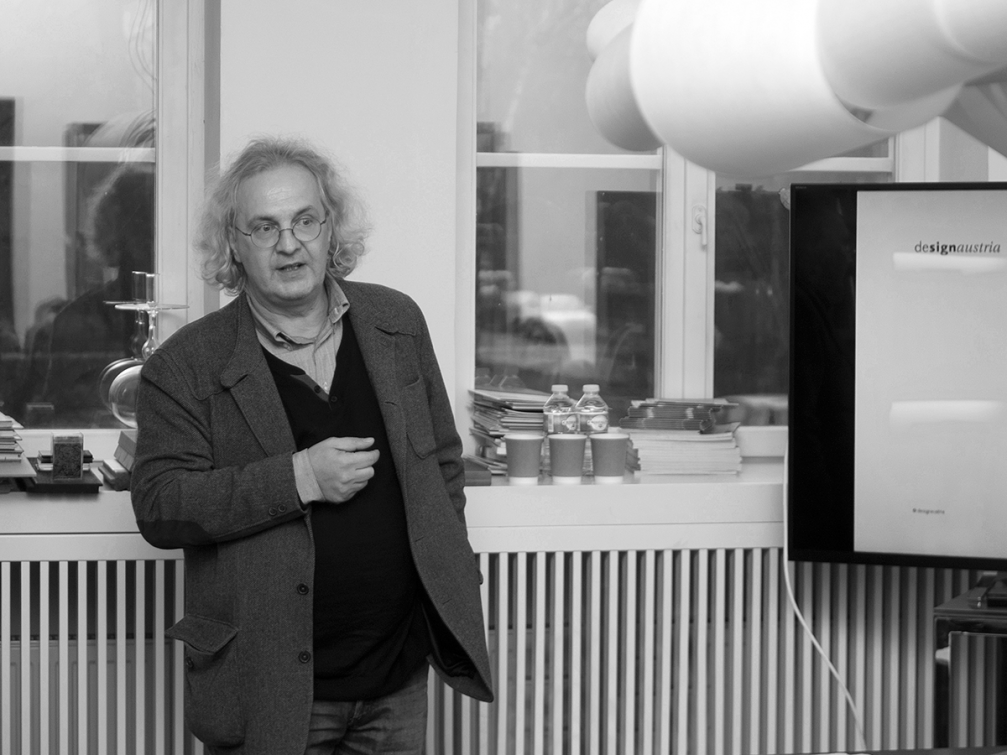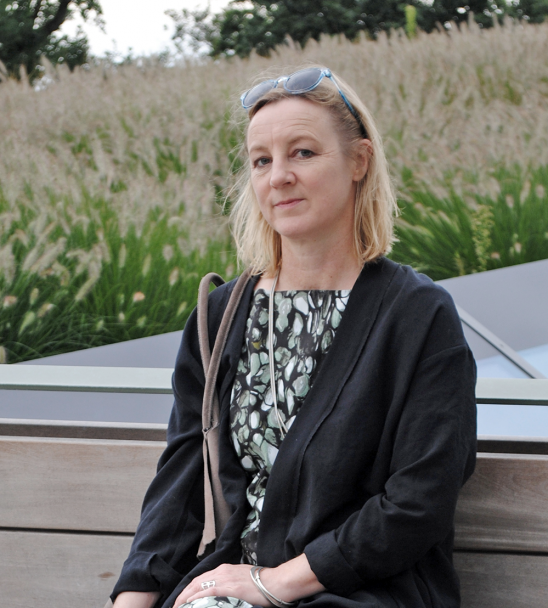
For more than 20 years Severin Filek has been leading one of Europe’s oldest design organisations «designaustria», witnessing the growth of Austria’s design scene and contributing to building a design nation. Being a part of BEDA (Bureau of European Design Associations), he has been an influential actor in shaping Europe’s design policy. Severin reveals why measuring the value of design is more beneficial than subsidising it, defines design as a driver for success and reflects on a progressive scenario for a thriving design industry.
What is the mission of «designaustria»?
«designaustria» aims to raise design awareness in society, spread the use and benefits of design in economy and promote it, and professionalise designers. Founded in 1927, «designaustria» is one of the oldest organisations in Europe, and over the decades we have gained great knowledge in the field of design as a part of creative industries. We have around 1300 members: illustrators, graphic, communication, information and multimedia designers, packaging, textile, product and industrial designers, companies and clients.
We offer consulting, organisational and administrative support to designers, companies in the market and even the government in competitions or research, so in the background we also function as a knowledge centre. We believe that internationalisation and export is very important for a small country like Austria with 8,5 million people and big markets around us, so we deal with EU projects, orientate ourselves internationally, and are members of several European and global organisations, which serve as networking platforms for Austrian and international designers.
How does «designaustria» provide enabling environment for design development?
We do a lot regarding copyrights and design protection, instruct designers how to calculate value of their products, honorariums and salaries, how to keep clients, write their terms and conditions and support them on their daily business. We do it on a regular basis especially for the young designers that are new in the market and don’t have their own legal advisers. Sometimes those are very basic things, because they aren’t taught in art and design schools. There is a general problem in whole Europe that we lack lifelong learning possibilities. So we also offer some of these activities.
There are many talented illustrators, but a very small market for publishing companies in Austria; therefore it’s difficult to find the first publisher. So biannually we find a publishing company anywhere in the world to jointly organise a competition to help the young talents get their first book out in the market. In the years we have managed to publish 7 or 8 books, some of which are already famous. We’re also involved in the Vienna Design Week, collaborate with Designmonat Graz and do a lot of «PechaKucha» events to bring specific topics and designers together just to have the exchange basis, because designers are used to working on their own and sometimes don’t even know what their colleagues are doing, except that some are winning international prizes. Such activities put opportunities in the air, because being a part of a network can help to team up and take part in bigger projects.
Do you offer any financial support mechanisms?
At the moment there is the European project VINCI (Vouchers in Creative Industries), which is a check for 5000 euros that designers can apply for if they have a client. Other subsidies are the open calls, where designers can enter their projects, and an international jury decides on who wins. «designaustria» doesn’t financially support designers, because a large part of tax money is invested in creative industries by the state and regional governments, and Austria sets aside quite a lot for design innovation services.
We believe that design has nothing to do with subsidies. Designers shouldn’t be subsidised because they know that their work is bringing an economical advantage to the client, so it’s not a good impression that it should be subsidised.
Government supports the first project — the prototype that is done together by a client and a designer, because it’s more expensive to invest in prototyping before a product or a service is launched. I think we should all get away from the image that design has to be subsidised, which is not true, and luckily this option doesn’t exist in Austria.
What is your vision regarding the development of Austrian design?
There is no official design strategy in Austria. We are still working on it and it would be great to have a legal paper in place. There is no need for a design policy, because a strategy is more flexible and can be adapted, changed and corrected easily. The important thing, of course, is the implementation of design criteria in public procurement activities in all public calls. It’s not just about product innovation anymore. Design is also an innovation tool for services and methods, so it’s involved in all the levels of society and environment, not only in the economy and product innovation field, as it was seen before. People in Austria are recognising it and changing their mindset.
One of the goals is to make Austrian design noticeable abroad, and I’m very happy that we can prove that — every three years we do a study and we see the export rate of design services to foreign countries rising steadily.
What has helped Austria progress in design?
Design has become more noticeable in practice and in the environment. The awareness is rising and spreading to small cities, and if there is a town mayor, very keen on having proper identity or a wayfinding and information system, they ask for our help and support. So the daily design experience and activities improve there, and it’s slowly but steadily going forward.
However, the curriculum in design education changes very, very slowly. For many years we [in Austria] have had long discussions for changing the public education system. The private universities are more flexible, pushy and offer specialised courses like service, information, storytelling design. The most urgent thing to be changed in the curriculum for designers is to have a more business–oriented approach, because designers that leave art universities have no clue how to calculate and value their work.

What could be some of the possible ways for strengthening Latvian design industry and making it more noticeable worldwide?
Be more international and build up links to international networks. I think that the Latvian Design Information Centre should rejoin BEDA. Those are one of the doors to international audience, and a great platform to access European projects, be closer to discussions and be more influential in the end. Latvian design strategy is strong, and the fact that there should be an official responsible organisation that looks after how the design strategy is implemented and has officially allocated funds is very important in Austria as well. That is the right track.
What could be the first and most important step to raise design awareness in the general public?
The first step is to make public events and design exhibitions, such as the «Design manifestation» exhibition cycle and «radi!» event series that you have planned for this year. The «Hidden Heroes» exhibition at the «Xcelsior» exhibition hall was a great example of how to raise awareness, because it shows objects of our daily lives that nobody actually thinks were designed, because they are taken for granted since they’ve always been around. But to raise public awareness fast, such exhibition needs a lot of promotion and should be more public, displayed in a big, central exhibition hall where most of the people pass by and can walk just in.
What are the new and noteworthy topics in Europe’s design discourse?
15 years ago we all just talked about brainstorming; nobody speaks about brainstorming sessions today. Everybody talks about design thinking — a process or a way of working, showing how the process of creation phase develops. In reference to the society, those would be «city for all» and «design for all» principles, topics of sustainable design, reuse, redesigning. Protection of design is very important; to have an equal level of protection all over Europe, so no one has to be afraid of going abroad and presenting their work.
A big issue is measuring design value. Authorities, politically responsible people and companies want to have data about expenditure of design activities in production, services and innovation to get the proof that they are important. We did a study in Austria asking production and service companies how important design was.
85% of companies believe that design is a driver of innovation, but when asked if they use design services only 50% admit that they do.
It’s much easier to collect data when not mentioning the word «design» in the questions, because people have trouble understanding it. Instead, try asking, if they are the leaders in the market or have opponents, what are their resources and investments every year, their attitude towards improving products for consumer surpluses, if they use new knowledge or technologies, save money by providing lower costs of production because of a new or better machinery, or if they changed the appearance of packaging, which means investment in graphic design activities. By putting these questions in relation to figures and numbers like turnover, profit, export rate, you can get the relationship between the utility in their services and products and the economic value, which improves.
And that is necessary for a successful design strategy, because you can see if more people get employed in the design industry, if the turnover and export rate is rising, and prove if your activities are successful.





Viedokļi